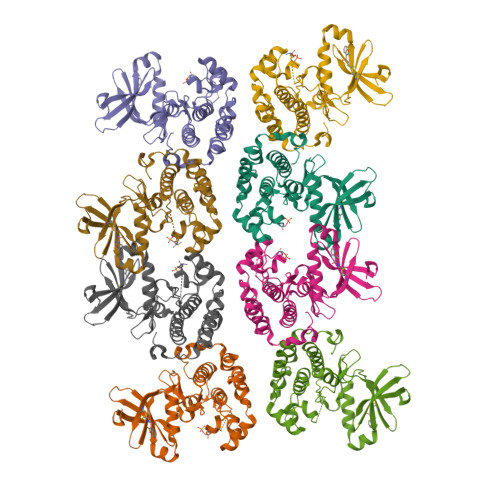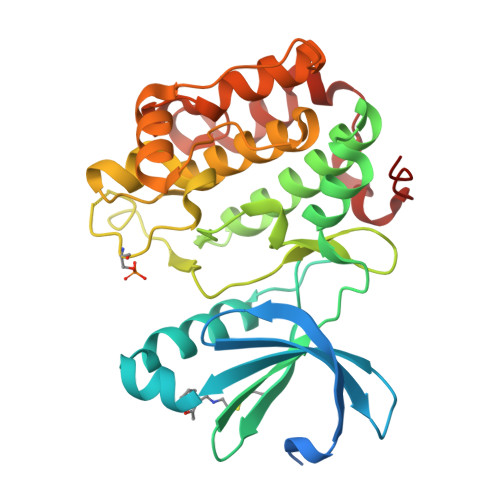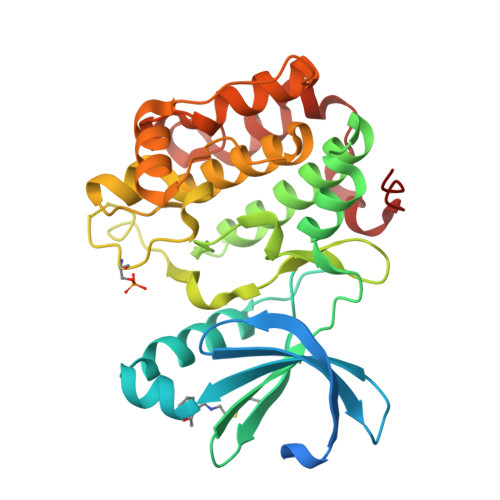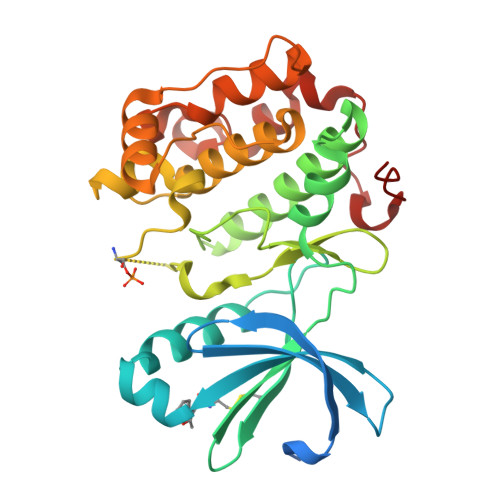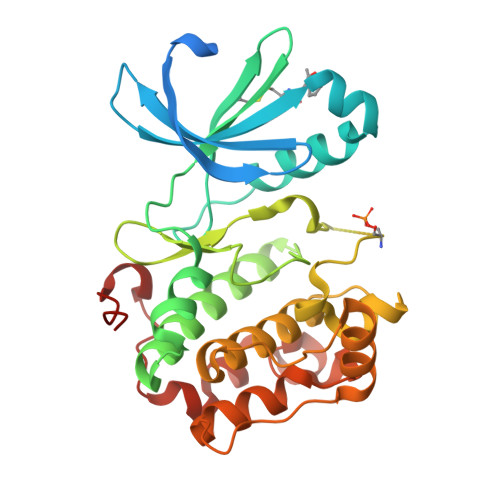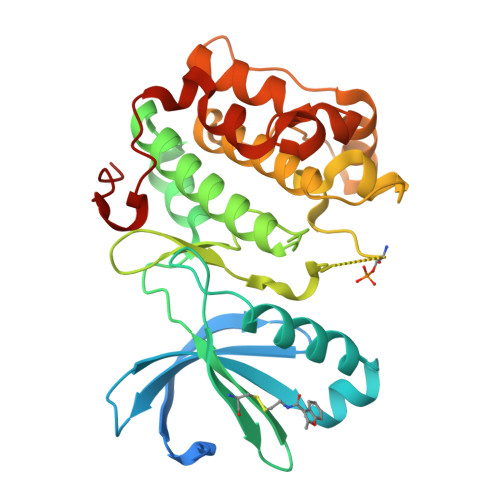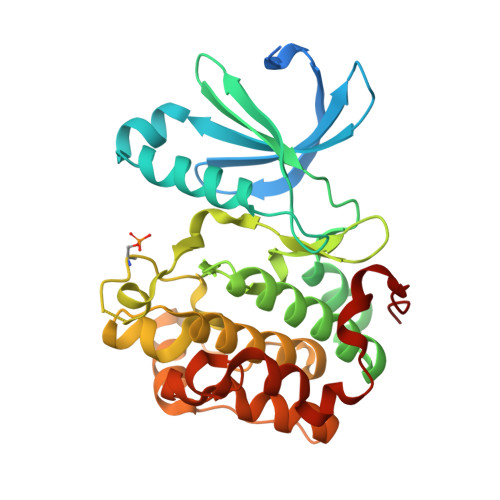Turning a protein kinase on or off from a single allosteric site via disulfide trapping.
Sadowsky, J.D., Burlingame, M.A., Wolan, D.W., McClendon, C.L., Jacobson, M.P., Wells, J.A.(2011) Proc Natl Acad Sci U S A 108: 6056-6061
- PubMed: 21430264
- DOI: https://doi.org/10.1073/pnas.1102376108
- Primary Citation of Related Structures:
3ORX, 3ORZ, 3OTU - PubMed Abstract:
There is significant interest in identifying and characterizing allosteric sites in enzymes such as protein kinases both for understanding allosteric mechanisms as well as for drug discovery. Here, we apply a site-directed technology, disulfide trapping, to interrogate structurally and functionally how an allosteric site on the Ser/Thr kinase, 3-phosphoinositide-dependent kinase 1 (PDK1)--the PDK1-interacting-fragment (PIF) pocket--is engaged by an activating peptide motif on downstream substrate kinases (PIFtides) and by small molecule fragments. By monitoring pairwise disulfide conjugation between PIFtide and PDK1 cysteine mutants, we defined the PIFtide binding orientation in the PIF pocket of PDK1 and assessed subtle relationships between PIFtide positioning and kinase activation. We also discovered a variety of small molecule fragment disulfides (< 300 Da) that could either activate or inhibit PDK1 by conjugation to the PIF pocket, thus displaying greater functional diversity than is displayed by PIFtides conjugated to the same sites. Biochemical data and three crystal structures provided insight into the mechanism of action of the best fragment activators and inhibitors. These studies show that disulfide trapping is useful for characterizing allosteric sites on kinases and that a single allosteric site on a protein kinase can be exploited for both activation and inhibition by small molecules.
Organizational Affiliation:
Departments of Pharmaceutical Chemistry and Cellular and Molecular Pharmacology, University of California, 1700 Fourth Street, San Francisco, CA 94158, USA.








